The first ten days seem to have lasted three weeks and also flown by. Science is 24/7 onboard the R/V Knorr. We spent three days at our first mega station, in which I filtered about 260L of water to collect samples for analyzing viral abundance and diversity. I also processed an additional 20L of water to run a set of experiments for the Biological Oceanography course at Cornell. Since the mega station we have covered two small and one intermediate station and we’re now steaming on to the next station. I think my personal water budget is up to ~350L, so much science!
Filtering for viruses
Class experiment set up
In addition to our own work, each scientist is responsible for a rotating watch schedule. When on watch we assist others with their work and help deploy and retrieve any scientific equipment that goes overboard for sampling. My first five days were on the 0000-0800 watch which meant I got to help retrieve McLane pumps for the one of the other research groups and also got to see beautiful moonscapes and sunrises. I’ve transitioned to the 1600-0000 watch and got to assist with my first CTD retrieval yesterday. The CTD is attached to a wire with a rosette of niskin sampling bottles. This wire gets lowered to depths the science team wants, this trip is focused on deep water and our deepest cast so far has been 5300+ meters. Once the depth we want is reached we can close the niskin bottles and capture water at that depth. The rosette is then slowly brought from depth to the surface, capturing water at different depths along the way. When the rosette reaches the surface we bring it on deck and then collect our individual samples from the big niskin bottles.
Moonscape
Besides science I’ve had a bit of time to take my ukulele or book out on deck and enjoy the sun for a bit. The science and boat crews are extremely pleasant and I’ve really been enjoying chatting and scheming about experiments to run and how the ship works. Last Sunday I treated myself to a Kinder Joy egg for Easter (obtained back in Montevideo), the ship did a nice brunch and one of the faculty on the ship brought egg chocolate malt balls. By far the best Easter treat were the Pilot Whales which tracked along with our boat for a while we were recovering some of the particle traps. See the official DeepDOM blog for a video by Colleen Durkin and Ben Van Mooy.
Kinder Joy: airplane!
Besides whales, we’ve seen a few different albatross (Wandering and Yellow-Nosed), a dark petrel (probably Great-Winged), and the tons of the Great Shearwaters. In plankton tows we’ve seen lots of really cool blue copepods and assorted zooplankton, ctenophores and tons of phytoplankton. As we move north it’s getting warmer and warmer, and we’re still only at latitude 28S. Onward!
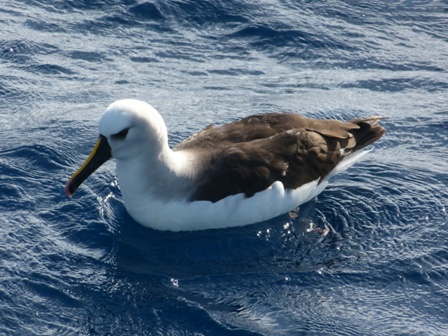 Great Shearwater (upper), Yellow-nosed Albatross (lower) from Colleen Durkin
Great Shearwater (upper), Yellow-nosed Albatross (lower) from Colleen Durkin
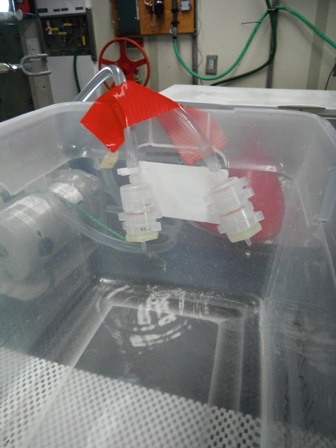
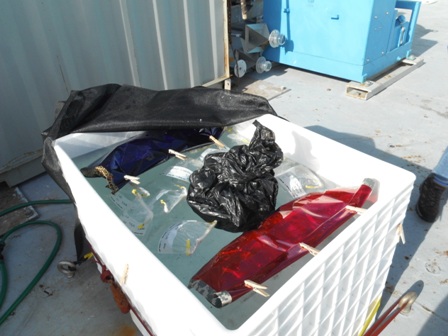
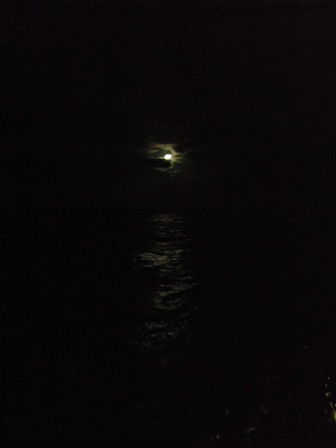
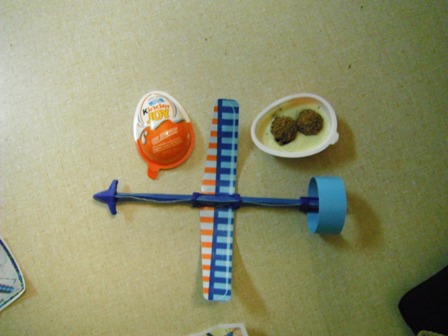
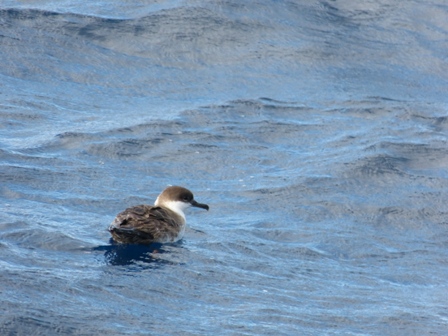
Hi Erin,
the cable website was awesome! Thank you! Please keep me updated about everything you do that is at all interesting. Thanks! I have one more question. How do you respond to me and my questions? Is there internet out in the ocean?
Wylie
Hi Wylie,
Sorry for the delay, have you seen some of the videos of the ship? There is a large white ball mounted toward the aft deck which is where a lot of the technology for phone and internet communication is housed. It’s pretty amazing to be in the middle of the ocean and still have the internet!
~Erin
Hi Erin! I wish I was on the ship with you! It sounds like fun. Can you tell me more about what kind of wire the CTD is attached to? Thanks! your cousin Wylie (9 years old)
Hi Wylie, thanks for the question. The CTD is attached to a .322 inch E-M cable. If you want more information about it, and some of the other wires an cables used on the ship, check out this website: http://www.whoi.edu/page.do?pid=8543.